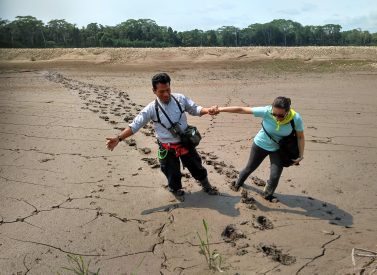
Guyana Nature Experience
Discover Guyana – from multi-cultured Georgetown to the great Kaieteur Falls.
This holiday package takes in all of Guyana’s highlights on this adventure holiday in the Amazon rainforest.
Anteaters, tapirs and monkeys surround us as we adventure deep into the forested interior, and for the lucky – jaguar!
As we travel by river we are rewarded with a glimpse of Guyana’s amazing bird and wildlife, including the giant river otter.
More on Guyana Nature Experience
Our adventure starts as we fly deep into the jungle to see the stunning Kaieteur Falls.
We then visit Iwokrama Field Station, exploring trails and at night spotting caiman and other nocturnal wildlife, and the Amerindian village of Surama.
A canoe trip on the Rupununi River takes us to Karanambu, renowned for work rehabilitating orphaned giant river otters to the wild.
Now deep in Guyana’s interior, we visit Caiman House and see how the resident scientist’s field studies into black caiman progress, taking to canoes at night.
We fly back to Georgetown for an afternoon city tour and one final hurrah before leaving this stunning rainforest-covered country.
Trip Highlights
Print Share Download as PDF-
A day dedicated to the mighty Kaieteur Falls.
-
Chance to see some of the best wildlife in the rainforest.
-
Visit Amerindian villages deep in the Amazon.
-
Canopy walkways offering some of the best birdwatching in South America.
-
Go out on a caiman research project, helping to protect and preserve the species.
-
Guided tour of multi-cultural Georgetown.
-
Iwokrama Field Station is included, giving a glimpse at wildlife and research.
-
Karanambu ranch, famous for giant anteaters and work on rehabilitating giant river otters.
"After the excitement of seeing a giant anteater with baby, I thought the trip couldn't get any better until we saw a jaguar close up on the riverbank!"
K. Dougal, Guyana
Full Itinerary
Day 1: Arrive in Guyana, transfer to Georgetown hotel (no meals)
Pick-up from Cheddi Jagan International Airport and transfer to Cara Lodge in Georgetown. Cara Lodge, a magnificent wooden colonial home transformed into a charming hotel, offers guests a touch of bygone elegance.
Built in the 1840s, this historic gem boasts a romantic past, once home to the city’s first Lord Mayor. Cara Lodge has also welcomed guests such as King Edward VIII in 1923, President Jimmy Carter, HRH King Charles III, and Mick Jagger.
*For travellers arriving from the UK on the direct Thursday flight from London, we can arrange a pre-tour stay at Cara Lodge before joining the main group.
Day 2: Visit Kaieteur Falls, return to Georgetown (B)
Fly from Eugene F. Correia International Airport over the Demerara and Essequibo Rivers and vast stretches of rainforest to reach Kaieteur Falls, the world’s tallest single-drop waterfall.
Located on the Potaro River, a tributary of the Essequibo, Kaieteur plunges 741 feet – five times the height of Niagara Falls – into a deep gorge. This unique spectacle, first documented in 1870, offers an awe-inspiring experience.
According to Patamona legend, the falls are named after Kai, a tribal chief who sacrificed himself by canoeing over the falls to save his people.
Kaieteur supports a unique ecosystem, home to the world’s largest Tank Bromeliads and the rare Golden Frog. Observe the flight of Kaieteur Swifts and, with luck, spot the elusive Makonaima Bird.
Optional Tours (extra cost varies):
- Birding in Georgetown’s Botanical Gardens
- Evening Seawall experience with bars and street food
- Dinner at Aagman Indian Restaurant
Kaieteur Falls Conditions of Sale
Flights to Kaieteur Falls are chartered and require a minimum of 12 passengers.
If the minimum number of passengers is not met, we will reschedule the trip for another date during your stay.
In rare cases where rescheduling is not possible, we will guarantee a flight with a minimum of 2 passengers.
Flights may be rescheduled due to weather conditions.
If a flight is cancelled due to unforeseen circumstances, a full refund will be provided.
Day 3: Fly to Fair View, boat to Iwokrama Field Station (B,L,D)
You will be picked up and transferred to Eugene F. Correia International Airport. From there, you will board a scheduled flight for a journey over hundreds of miles of tropical rainforest, landing at Fair View Airstrip. (Check-in time 0730 hrs, departure 0900 hrs). Following your arrival at Fair View Airstrip, you will be picked up and transferred to Iwokrama River Lodge.
About Iwokrama
The Iwokrama Rainforest is a vast wilderness encompassing one million acres. This protected area was established in 1996 as the Iwokrama International Centre for Rainforest Conservation and Development. Situated within the heart of one of the world’s four remaining untouched tropical forests – the Guiana Shield of North-Eastern South America – Iwokrama serves as a living laboratory for tropical forest management.
Iwokrama prioritises both research and sustainable business practices, ensuring that local communities benefit economically and socially from forest use and conservation. The forest is the ancestral homeland of the Makushi people, who have inhabited and utilised this land for millennia.
Iwokrama River Lodge is idyllically positioned overlooking the Essequibo River. Accommodation is provided in eight spacious timber cabins, each featuring an en-suite bathroom and a veranda offering captivating river views. Electricity is supplied through a combination of solar and diesel generator systems, and complimentary wireless internet access is available in the main building. Meals are served buffet-style in the Fred Allicock dining hall.
Exploring Iwokrama
Embark on guided nature trails with an Iwokrama Ranger to explore the surrounding area. Iwokrama is a haven for a diverse array of bird species, including the Capuchin bird, Black Nunbird, Chestnut-rumped Woodcreeper, Amazonian Antshrike, Brown-bellied Antwren, Spot-tailed Antwren, Todd’s Antwren, Spotted Puffbird, Green Aracari, Guianan Toucanet, Guianan Red Cotinga, Pompadour Cotinga, Rufous-crowned Elaenia, Bronzy Jacamar, Chestnut & Waved Woodpecker, Grey Antbird, and Strong-billed Woodcreeper. Three other Neotropical species of particular interest within the Iwokrama forest are the White-winged Potoo, Rufous Potoo, and Rufous-winged Ground-cuckoo.
The forest also supports a thriving mammalian population. You may encounter the Red-rumped Agouti and various monkey species, including the Red Howler, Black Spider Monkey, and Wedge-capped Capuchin.
After nightfall, we’ll venture out onto the river in search of the four species of caiman that inhabit these waters. We will also listen for the calls of nocturnal birds such as the Spectacled Owl, White-winged Potoo, Rufous Potoo, Long-tailed Potoo, Zigzag Heron, or Blackish Nightjar. Utilizing our flashlights, we will scan for the eyeshine of snakes, including Cox boas, tree frogs, and with a touch of luck, perhaps even spot some elusive mammals.
Day 4: Essequibo River, Turtle Mountain & Kurupukari Falls, Iwokrama Field Station (B,L,D)
We start early with a boat trip along the Essequibo River, navigating around nearby Indian House Island before heading back to the River Lodge for breakfast.
Following breakfast, we depart by boat, enjoying birdwatching opportunities along the way, and embark on a hike to Turtle Mountain. A well-maintained trail leads through the forest, culminating in an exhilarating ascent to the summit at 935ft (approximately 360m). While the uphill climb takes around one and three-quarter hours, the views over the forest canopy from the summit, coupled with the possibility of spotting Green Aracari, White Bellbird, or one of the five eagle species that frequent the area, make the effort well worth it.
This trail also offers excellent opportunities to see Black Spider and Red Howler monkeys. For those who may find this hike too strenuous, an alternative boat trip to Stanley Lake is available, where you can search for Giant River Otters and Black Caiman.
As the afternoon cools down, we set off on a boat trip to visit Kurupukari Falls (water level permitting) to view the Amerindian petroglyphs.
Day 5: Canopy walkway, Atta Rainforest lodge (B,L,D)
Begin your exploration by joining an Iwokrama Ranger on a guided nature walk along the trails surrounding the lodge.
Next, embark on a 4×4 journey along a trail renowned for its potential jaguar sightings. While sightings are not guaranteed, many visitors have been fortunate enough to spot this elusive feline.
Along the way, keep an eye out for the diverse birdlife that frequents the forest edge. This road serves as the sole north-south access route in Guyana, connecting the country to Brazil. Despite this, traffic is minimal, allowing for frequent wildlife encounters, including Agouti, Tayra, Tapir, and Black Curassow.
The journey culminates at Atta Rainforest Lodge, home to the Iwokrama Canopy Walkway.
Located near the southern boundary of the Iwokrama Reserve, the Iwokrama Canopy Walkway features four suspension bridges leading to three platforms, with the highest reaching over 30 metres above the forest floor.
Atta Rainforest Lodge
Situated just 500 metres from the base of the Canopy Walkway, Atta Rainforest Lodge offers comfortable private rooms with en-suite bathrooms, delicious home-cooked meals, and warm Amerindian hospitality.
The communal building has open sides that afford fine views of the surrounding forest, it houses the bar, dining area, and kitchen. Relax in the lovely gardens, adorned with heliconias that attract over ten different hummingbird species, providing excellent photo opportunities.
Enjoy a comfortable overnight stay at Atta Rainforest Lodge.
Day 6: Canopy walkway, Atta Rainforest lodge (B,L,D)
Before dawn, we return to the canopy walkway, an excellent location for birdwatching. Here, you may encounter Rufous-throated Sapphire, Green Aracari, Pygmy Antwren, and Guianan Streaked-Antwren. With a bit of luck, you might also spot Guianan Toucanet, Pompadour Cotinga, Buff-cheeked Greenlet, and a variety of other captivating birds.
From this elevated vantage point, you may also observe Red Howler and Black Spider Monkeys.
Beyond the Iwokrama Canopy Walkway, explore the surrounding trails for rewarding wildlife encounters. The forest teems with life, including a diverse array of bird species, fascinating insects, vocal amphibians, and playful primates. Deer, Tapir, and Agouti are also frequent visitors to the lodge. Avid birdwatchers will relish the opportunity to search for the elusive Rufous-winged Ground-cuckoo in the undergrowth.
As dusk settles over the canopy walkway, keep an eye out for the White-winged Potoo. Night walks are also highly recommended, as they often unveil unexpected and exciting encounters, including the possibility of spotting one of the six cat species known to inhabit the area near the lodge.
Day 7: 4x4 to Surama village, and stay at Surama Eco-Lodge (B,L,D)
Begin your day by welcoming the dawn chorus from the Iwokrama Canopy Walkway, followed by a return to the lodge for breakfast before your departure.
Embark on a journey through the rainforest, transferring from Atta Rainforest Lodge to Corkwood within the Iwokrama Forest. A relatively short trail leads to a potential encounter with the spectacular Guianan Cock-of-the-rock. This trail traverses a pristine rainforest, where your guides will share their knowledge of the medicinal and other uses of the local flora.
Continue your journey to the community of Surama.
Surama Village
Nestled in the heart of Guyana, Surama is an Indigenous community situated within five square miles of savannah, encircled by the forested Pakaraima Mountains. The villagers primarily belong to the Macushi tribe and continue to uphold many of their ancestral traditions.
Surama Eco Lodge
Surama Eco Lodge is a community-owned and operated enterprise. The Village Council serves as the Board of Directors, ensuring that tourism profits are invested in community development through collaborative decision-making.
Upon arrival in Surama, you will receive a warm welcome and be settled into your accommodation at the lodge. A guided nature walk will introduce you to the surrounding forest and its diverse birdlife.
As the afternoon cools, embark on a three-mile trek across the savannah and through the rainforest, reaching the Burro Burro River. This is an ideal time to observe birds and wildlife along the trail. Your guides will then take you on a leisurely paddle down the Burro Burro River, offering opportunities to spot Giant River Otters, Tapir, Tayra, Spider Monkeys, and a wealth of other species.
After nightfall, embark on an enlightening walk through the forest, immersing yourself in its mystique and observing the nocturnal wildlife. Remember to bring your flashlights to search for the eyeshine of creatures that emerge under the cover of darkness.
Enjoy a comfortable overnight stay at Surama Guest House.
Day 8: Surama Mountain, Rock View Lodge (B,L,D)
Rise before dawn to embark on a walk across the savannah, followed by an ascent of Surama Mountain. From the summit, you’ll be rewarded with panoramic views of the village, the expansive savannah, and the majestic Pakaraima Mountains.
Please Note: This climb, while not technically demanding, can be challenging, particularly after rainfall. If you prefer not to undertake the climb, alternative activities will be available.
Following the climb, you’ll transfer from Surama to Rock View Lodge in Annai.
Nestled where the savannah meets the forested foothills of the Pakaraima Mountains, Rock View Lodge resembles an oasis. Lush tropical gardens and vibrant flowering trees create a captivating ambiance, attracting a diverse array of bird species, particularly nectar feeders and fruit-eaters. The surrounding patches of light forest provide habitat for specific antbirds and flycatchers, while the grasslands support their own unique birdlife.
Cultural Immersion and Local Experiences
If in season, you’ll have the opportunity to witness the process of cashew roasting and observe the creation of local handicrafts, perhaps even trying your hand at these traditional skills yourself. Watch the spectacular sight of the roasted nuts self-igniting as their acid content combusts. You’ll then have the pleasure of tasting the freshly roasted cashews.
The lodge offers eight comfortable rooms, each equipped with an en-suite bathroom and a private patio with a hammock for relaxation.
Meals are served in a delightful dining area nestled beneath the shade of mango trees, featuring locally sourced produce whenever possible.
The inviting swimming pool, beautifully integrated into the garden setting, provides a welcome respite from the heat.
Enjoy a relaxing overnight stay at Rock View Lodge.
Day 9: Panorama Trail and transfer Karanambu Lodge (B,L,D)
Rise before dawn to embark on a hike along the Panorama Trail in the foothills of the Pakaraima Mountains. This scenic trail offers the potential to spot Cinereous Mourner, Finsch’s Euphonia, Reddish Hermit, Rufous-bellied Antwren, Green-tailed Jacamar, and Yellow-billed Jacamar. As the sun ascends, enjoy breathtaking views of the savannah and surrounding villages.
Return to the lodge for a leisurely breakfast before departing for Ginep Landing.
From Ginep Landing, we embark on a scenic boat trip along the Rupununi River towards Karanambu Lodge. Depending on river levels, this journey presents an excellent opportunity to observe Giant River Otters, as several family groups inhabit this stretch of the river.
Karanambu Lodge: A Legacy of Conservation
Karanambu, a 110-square-mile former cattle ranch in the North Rupununi, was the cherished home of the late Diane McTurk, a renowned conservationist and a global expert on giant otters.
Renowned for its expansive savannahs, wetlands, and diverse ecosystems, Karanambu encompasses a mosaic of habitats, including savannahs, marshy ponds, riparian forests, and a 30-mile stretch of the Rupununi River. Despite its relatively modest size, Karanambu boasts an extraordinary biodiversity, supporting at least 600 bird species and over 200 mammal species. The seasonally flooded savannahs and forests also serve as vital habitats for a remarkable diversity of fish species, with over 700 recorded – a figure unmatched anywhere else on Earth.
This region is steeped in history, serving as the ancestral homeland of the Makushi people and earlier inhabitants dating back more than 7,000 years. Renowned explorers and naturalists, including Robert and Richard Schomburgk, Charles Waterton, Evelyn Waugh, Gerald Durrell, and a young David Attenborough (who chronicled his experiences here in his early book, “Zoo Quest to Guiana”), have all been captivated by this unique and awe-inspiring landscape.
With the river and savannahs readily accessible, Karanambu offers a wealth of exciting activities. Two guided excursions are provided daily – one in the early morning and another in the late afternoon/evening, offering optimal opportunities for wildlife viewing. These excursions may involve boat trips on the river, 4×4 safaris across the savannahs, or guided nature walks along forest trails to explore the area’s diverse ponds.
In the late afternoon, embark on a boat trip in search of the elusive Giant River Otters. As dusk descends, witness the magical spectacle of the giant Victoria Amazonica waterlily blooming. On the return journey, keep an eye out for Black Caiman and other nocturnal creatures.
Accommodations are provided in traditionally constructed clay brick cabins, each featuring an en-suite bathroom and a relaxing veranda with hammocks.
Day 10: Giant anteaters & birdspotting at Karanambu Lodge (B,L,D)
We’ll begin the day with an early morning excursion to an area of rolling grasslands, known to be inhabited by a population of giant anteaters. With a bit of luck, we’ll spot one of these impressive creatures, reaching up to six feet in length, as it forages for breakfast in the termite mounds that dot the savannah.
Giant anteaters are primarily solitary animals, with interactions primarily limited to mother-offspring bonds, territorial disputes between males, and mating periods. Mother anteaters exhibit remarkable maternal care, carrying their young on their backs until they are weaned.
In the evening, we can embark on a relaxing river excursion. Alternatively, for avid birdwatchers, there’s the opportunity to explore the woodlands or gallery forests along the river, offering excellent birdwatching opportunities.
A highlight of the area is the elusive Agami Heron.
An evening walk along the airstrip presents a unique chance to see seven species of nightjar, while the surrounding grasslands are home to the Double-striped Thick-knee.
Enjoy a comfortable overnight stay at Karanambu Lodge.
Day 11: Morning wildlife spotting, transfer to Caiman House (B,L,D)
In the event you did not see a giant anteater the previous morning, there is time to travel out to search the savannah again. Or explore the Rupununi River in search of wild Giant River Otters, Black Caiman and Arapaima, making a boat journey along quiet stretches of the river.
Return to the lodge for breakfast before departure.
After breakfast, we say our goodbyes and transfer upriver by motorized boat to the nearby Amerindian village of Yupukari and Caiman House.
At the edge of Yupukari Village in the Central Rupununi is Caiman House Field Station, a combination guest lodge and education centre focused on research and conservation projects along the nearby Rupununi River.
The Field Station is the hub of several participatory development projects, including introducing classroom libraries in all three village schools and an Internet-enabled public library. Visitors may have the opportunity to meet local craftspeople, including the furniture builders at Yupukari Crafters, The Wabbini craft house, and the ladies that grow and process cotton and make lampshades.
About Caiman House
Caiman House is also very involved in a turtle conservation program. Recently in the rainy season, the sand banks get covered in water as the rains have been coming earlier. Rangers go out and dig up the eggs the turtles have laid on the sandbanks before they are covered in water and spoiled. They are taken back to the field station and reburied. When they hatch, they are kept in two ponds.
After a few months, there is a turtle celebration, and the children in the wildlife club all join in to release the turtles back into the river. By holding them for up to a year, the shells harden, and the survival rate is much higher, resulting in a larger population of turtles. The yellow-spotted river turtles are the primary beneficiaries of this program. Still, the rare giant river turtle stands to gain the most. Special attention is paid to rescuing these endangered giants. You can visit the holding ponds where the babies are kept.
Four modest but comfortable guest rooms are situated around a central lounge area in the lodge behind the research centre. Guest rooms feature comfortable beds and ensuite bathrooms with flush toilets and running water.
Other rooms are available in the annexe building, two with ensuite and one with a shared bathroom. Caiman House Field Station and the Guest House are powered 24 hours a day by a large solar array. The entire station has wireless internet access.
Day 12: Return to Georgetown, city tour (B,D)
Travel by vehicle from Caiman House to Lethem to connect with your scheduled flight to Eugene F. Correia International Airport. Upon arrival at the airport, you will be met and transferred to your hotel in Georgetown.
Afternoon Georgetown Tour
This afternoon, embark on a guided tour of Georgetown with an experienced local guide. Delve into the city’s rich history, fascinating facts, and intriguing local legends.
The tour will commence at the iconic Georgetown Seawalls before venturing into the heart of the city.
Key highlights of the tour include:
- Stabroek Market: Experience the vibrant atmosphere of this bustling market, once described as a “bizarre bazaar.”
- St. George’s Cathedral: Marvel at this architectural masterpiece, one of the world’s tallest freestanding wooden buildings.
- Historic Buildings: Admire the architectural grandeur of the Public Library, City Hall, the Victoria Law Courts, and St. Andrews Kirk.
- Cultural Institutions: Visit the National Museum, home to a captivating collection of taxidermied animals, and the Walter Roth Museum of Anthropology, showcasing fascinating Amerindian artifacts and history.
- Botanical Gardens: Explore the lush greenery and diverse flora within the Botanical Gardens.
- Manatee Encounter: Enjoy a visit to a nearby pond in the gardens or the National Park to observe and feed the endangered West Indian Manatees.
Alternative Tour Option:
For those who participated in a city tour as part of their Pre-Tour, you can exchange this tour for a dedicated birdwatching excursion within Georgetown’s Botanical Gardens.
Backyard Café Culinary Adventure
Be picked up at your hotel and transferred to the unique Backyard Café, a hidden culinary gem located in the West Ruimveldt area.
Chef Delven Adams, your gracious host and culinary maestro, will warmly welcome you upon arrival. As the name suggests, this intimate restaurant is nestled within Chef Delven’s own backyard, where you may even find yourself reaching for a ripe passion fruit hanging from the arbor overhead.
Chef Delven’s menu is a delightful reflection of the season, showcasing a fusion of Guyanese flavors with global influences. He carefully selects the freshest ingredients from the local market, tailoring the menu to your preferences and any dietary restrictions.
If you’re interested, Chef Delven invites you to join him in the kitchen as he prepares a delectable meal. Watch as he skillfully utilizes his smoker and open fire to prepare fresh fish and other dishes. You can even lend a hand and learn some of his culinary secrets.
While the tantalizing aromas fill the air, relax under the arbor, sipping on unique fruit juices or enjoying a refreshing Banks Beer.
Once the meal is ready, savor a delectable culinary journey, starting with an appetizing appetizer, followed by a satisfying entrée, and concluding with a delightful dessert.
Alternative Dining Option:
For those who enjoyed lunch at the Backyard Café as part of their Pre-Tour, you can exchange this dining experience for an unforgettable dinner with “The Singing Chef.” Please confirm your preference at the time of booking.
Enjoy a comfortable overnight stay at Cara Lodge.
Day 13: Optional tours, transfer to airport (B)
Check out from Cara Lodge at midday. Late check-out is available at an additional cost. Enjoy some free time before your transfer to Cheddi Jagan International Airport.
Further Tour Options (Extra Cost)
Enhance your trip with these optional tours:
- Hoatzin & Coastal Shield Endemics: Explore unique habitats and encounter fascinating bird species, including the iconic Hoatzin.
- Birding in Georgetown’s Botanical Gardens: Discover the diverse birdlife within the serene Botanical Gardens.
- Seven Curry Tour: Embark on a culinary adventure and savor a variety of delicious Guyanese curries.
Inquire for More Details
For further information and to book any of these optional tours, please do not hesitate to ask.
Prices From $6,945 / £5,646 per person
What's Included?
Hotels, guest houses, lodges, camps, all meals as indicated, transport throughout and to and from Georgetown airport, local guides, internal flights as indicated, local guides, Kaieteur National Park fee, Iwokrama Forest User Fee, Iwokrama Canopy Walkway fee.
What's Not Included?
International flights – we can arrange these for you, tips, airport departure tax, personal items, alcoholic drinks, visas, cost of extra options tours, meals not listed.
Accommodation
Being mainly rainforest, and because much of the trip takes place in the rainforest, you will sleep in beds surrounded by mosquito nets. Rooms are comfortable and spacious but please note that in remote locations, such as Karanambu and Surama, insects can enter the rooms at night. Your guide will give any advice or help if you are concerned.
Sleeping within the rainforest and savannah is a fantastic experience, and comes as second nature after a day or two.
Rainforest and savannah lodges
Guyana has only a handful of lodges in its rainforests and savannahs, and most of these are small and remote establishments with fewer than a dozen beds. Some – like Rewa, Surama, and Maipaima – are run by the local Amerindian villagers who turn your visit into something like a homestay experience.
Others – like Karanambu – are captained by British expats who have carved out a slice of unexpected comfort in an otherwise rugged environment.
Others yet – such as Caiman House, Atta Rainforest Lodge, and Iwokrama River Lodge – have a strong science and nature focus and provide amply comfortable hospitality as well as a chance to learn about the vivid surrounding ecosystems.
Running water and at least a few hours of electricity are available at each lodge, and amenities are always clean and comfortable.
While no one comes to Guyana looking for a luxury travel experience, welcome creature comforts are on offer at the charming colonial boutique Cara Lodge in Georgetown as well as the storied Pegasus on the city’s northwest corner.
Meanwhile, Baganara Island on the Essequibo delights visitors with a host of recreational and relaxation opportunities. Georgetown’s newest international-class hotel, the Georgetown Marriott, opened its doors in 2015.
Tour Staff
A variety of expert guides may accompany on this tour, all of whom have many years’ experience and plenty of enthusiasm to make sure your trip is a great one.
Below are a few of the guides.
Wally Prince: Unrivalled expertise and experience leading tours and teams in Guyana.
Wally is one of the most sought-after guides for professional birders, documentary teams, and scientific expeditions visiting Guyana. He served for seven years as the guide coordinator, resident wildlife biologist, chief trainer, and operations manager at Iwokrama International Centre for Rainforest Conservation and Development. He has identified more than 700 of the 800+ bird species recorded in Guyana and is intimately familiar with their habitats, behaviours, vocalisations, and mating rituals. He grew up wandering through Guyana’s lush and biodiverse interior.
Gary Sway: Amerindian, Expert Naturalist
Gary Sway is a Macushi Amerindian from the village of Surama. Having grown up in the rainforest he has a great understanding and affinity for his natural surroundings and the wildlife. He has been a guide at Surama Eco-lodge for nearly 15 years and is well loved by those who have explored and seen the rainforest through his eyes. Gary is also an experienced birding guide and has represented Guyana at the Bird Expo in Columbus Ohio, USA. His patience and keen eye means great rewards for those birding with him. In his spare time Gary is a leading player in the Surama Makushi culture group.
Nadir (Carlos) Allie: Guide, Bird Expert
Nadir (Carlos) Allie was originally from the west coast of the ancient county of Berbice. His family were rice farmers, but Carlos did not want to follow this path, and moved to Georgetown to learn his father’s profession and became a tailor. From an early age Carlos always had a love and passion for birds. He never joined the other boys in trying to shoot them with a slingshot, preferring to rescue and care for the injured ones.
In Georgetown, through his love of birds he became friends with Andy Narine and together they formed the Guyana Amazon Tropical Birds Society (GATBS). Through GATBS, Carlos was able to get involved in many different projects including bird counts for some of the interior lodges, and also collecting information on the avifauna of Guyana for a new Guyana bird list. Over the years Carlos has become an experienced bird guide, leading tours to Guyana’s top birding locations especially along the coastlands where he was born and continues to live. Carlos loves to share his passion and love of birds with visitors and locals whenever he gets the opportunity. He is especially fond of leading tours of the Botanical Gardens in Georgetown.
Meals
Almost all dietary requirements can be catered for – please enquire in advance as we have to organise supplied.
Whilst on tour the food is of a very good standard with fresh beef, chicken and fish and plenty of vegetables and fruit.
On camping trips/in remote areas, use is made of dried and salted produce, supplemented by fishing.
The blend of different ethnic influences – Indian, African, Chinese, Creole, English, Portuguese, Amerindian, North American – gives a distinctive flavour to Guyanese cuisine.
Try dishes such as Pepper Pot, meat cooked in casareep (bitter casava) juice with peppers and herbs. Garlic pork, a specialty at Christmas. Curry and Roti is popular everywhere. Seafood is plentiful and varied, as is the wide variety of tropical fruit and vegetables. Try casava and yams.
Rum is the most popular drink and Guyana blends some of the worlds best. There are many inexpensive rums that are an excellent rum with mixers. The better rums such as Banks Extra, Banks XM 10 Year and DDL’s 12 year old King of Diamonds are smooth rums and great straight or on the rocks. DDL’s 15 year old El Dorado was voted the best rum in the world in 1999, 2000 and 2001, and is as smooth as a good brandy. The local Banks Beer is a good beer.
The water from the tap is brownish in colour, which is from the tannin in the water, and not polluted. However, it is recommended that bottled water, which is readily available, is used for drinking. Remember to drink plenty of it to prevent dehydration as it does get humid in Guyana.
Activity Level
You need to be have a reasonable level of walking fitness to hike the mountain walks, altough the walks are not mandatory.
Most days you will walk for a couple of hours, spotting wildlife. The humidity can make a short walk feel a lot harder than it is, and take on board lots of water.
The trip is open to anyone who wants to experience the rainforest and who wants to be active and interesting without it being demanding or without time to relax.
In the rainforest, we wake early, around 06.00-08.00 as most animals are active before the heat of the day kicks in. We breakfast, either on the hoof or back at the hotel, and enjoy a trip during the morning.
Transport could be by dug out canoe, 4×4, light Cessna plane or on foot. Guyana is a fantastic place to travel around as adventure awaits on every corner.
After lunch, we undertake another activity, or move to new lodgings, settle in, and then head out at dusk to see the wildlife once more.
Night walks are possible in some areas – or you may choose to relax – then it is dinner and time to recount the day’s highlights.
Practical Information
Introduction to Guyana
Guyana is the only English-speaking country on the South American continent and has a Caribbean feel.
It is a destination for the nature lover looking for an off-the-beaten-path destination with many attractions. Guyana offers pristine rainforest, abundant wildlife, jaguars and the mighty Kaieteur Falls.
Start your adventure in the melting pot that is the country’s capital – Georgetown. Here Hindu, Muslim and Christian cultures blend in harmony.
Head off to visit the breathtaking Kaieteur Falls – the world’s highest single-drop waterfall.
Then the interior beckons. Jungle and Savannah await. With luck you might spot the Cock o’ the rock or a harpy eagle.
Bigger mammals such as the ant eater might surprise you or if incredibly lucky the mighty jaguar. Travel by road or river and stay in rustic but comfortable lodges – all with an authentic Guyanese welcome.
Guyana will be an unforgettable adventure.
Geography of Guyana
Guyana has five natural habitats to discover, the most famous of which is is its dense rain forest.
This ‘jungle’ is also known as the Forested Highland Region and is in the south of the country, and is very sparsely populated.
The majority (around 90%) of Guyana’s population lives in a marshy plain on the Atlantic coast, known as the low coastal plain.
Most of the country’s mineral deposits (bauxite, gold, diamonds) are found a little further inshore in that is called the white sand belt.
The south west of the country gives way to a desert savannah which then becomes an interior savannah.
From here, the grasslands and mountains of the interior highlands start to rise towards the borders with Brazil and Venezuela.
This is the largest of Guyana’s geographical areas and consists a series of plateaus, flat-topped mountains, and savannahs.
The Pakaraima Mountains dominate the western part of the interior highlands and include Mount Roraima, Guyana’s highest peak at 2,772m (9,094 ft) on the Venezuelan border.
The largest expanse of grassland, the Rupununi Savannah, covers about 15,000 square kilometres in southern Guyana.
Guyana has three large rivers, the Essequibo at 1,010km(628 miles), the Courantyne River (which forms a natural border with Suriname) at 724kms (450 miles), and the Berbice – 595kms (370 miles).
Weather in Guyana
Guyana is a hot and humid country. February and March are prime times to visit, along with Aug-Jan. Read our guide to Guyana’s weather for more.
The mean shade temperature is 27°C, while maximum is 31°C and the minimum is 24°C. The heat is greatly tempered by cooling breezes from the sea.
There are two wet seasons in the north of the country, from May to June, and from December to January.
The south and the Rupununi region receive one wet season from May to July.
All wet seasons may extend into months either side.
Rainfall averages 2,300 mm a year in Georgetown.
Kit list
Good kit is vital for every trip.
Book with Andean Trails and get 15% off Páramo’s fantastic ethical and high performance outdoor gear.
Overview
Guyana is a hot and humid country.
Take sunscreen, sun glasses and a hat to Guyana.
It can rain at any time, so always have a poncho/waterproof jacket handy.
Give plenty of thought to kit selection, and try to keep weight down.
Passenger/s traveling on internal flights in Guyana are allowed a free baggage allowance of 20lbs/9.1KG exceeding this weight passenger/s will incur a cost of GY$150.00 (price subject to change) equivalent to US$ 0.77cents per pound. Please note that additional baggage allowance is subject to availability and cannot be confirmed until day/time of check-in by the airline. We can book excess weight on your behalf but it is subject to being within the payload of the aircraft and at the discretion of the airline. We understand you may want more than 20lbs/9.1KG of baggage and wish to have guaranteed excess baggage/weight and so an alternative is to pre-book an extra seat on the flight which will afford you 175lbs/79.4KG for you to use individually or for your group.
Below is a more detailed guide.
Detailed kit list
- Good binoculars.
- Camera and film / memory cards (take at least twice the amount you think you will need!).
- Tight-weave, light weight long trousers.
- Quick dry socks.
- Rain suit or long poncho (100% waterproof – test before you leave home).
- Long-sleeved tight-weave shirts.
- T-shirts.
- A warm jumper – it can feel cold on some boat journeys.
- Water bottle (2 litres approx.) & purification tablets.
- Sun cream (high factor, min. 30+) and lip salve.
- A broad-brimmed hat that will not come off on windy boat-rides.
- Shorts.
- Sunglasses with UV filter.
- A pair of trainers.
- Ankle high hiking boots.
- Insect repellent.
- The original and a photocopy of your passport.
- Yellow fever inoculation certificate.
- A large, bright head torch, spare batteries and bulb.
- Cash (small denomination bills, USD or GBP sterling) for souvenirs at the lodge, alcoholic beverages, etc.
- Daypack (at least 30 litres). Comfortable and with waterproof lining or cover.
- Personal first-aid kit to include: painkillers, plasters (band-aids), moleskin, antibiotic cream, general antibiotics (ask your GP), after-bite (tiger balm), anti-diarrhoea tablets, throat lozenges, re-hydration salts & personal medication.
- Towel & wash-kit.
- Wet Wipes/antiseptic hand-wash cream.
- Head-lamp (plus spare bulb and batteries).
- Penknife.
- Travel alarm clock.
- Plastic bags – ‘Zip-loc’ & tough bin liners.
- Book, e-book, mp3 player/ipod or other to help pass the time.
- Extra snacks i.e. cereal bars or favourite chocolate bars.
Miscellaneous others
- Money belt.
- Passport.
- U.S. dollars / GBP sterling cash, mixed-denomination notes, undamaged and unmarked.
- ATM cash/credit card.
- Any inoculation certificates.
- Personal & medical insurance certificates.
- Presents e.g. Postcards from home.
- Comfortable clothes for travel, smart clothes for Georgetown
ATOL holiday protection
Andean Trails has 25 years of experience of putting together the best South America holidays.
We pay a fee to the CAA for every licensable passenger we book since we hold an Air Travel Organiser’s Licence granted by the Civil Aviation Authority. In the unlikely event of our insolvency, the CAA will ensure that you are not stranded abroad and will arrange to refund any money you have paid to us for an advance booking.
We also offer ATOL (Civil Aviation Authority) protected holidays to give our customers peace of mind when booking and travelling.
When you buy an ATOL protected air holiday package from Andean Trails Ltd you will receive a Confirmation Invoice from us confirming your arrangements and your protection under our Air Travel Organiser’s Licence number 6275.
You can read more about ATOL, who is covered and what protections you have if not ATOL-covered, on our ATOL page.
What is ATOL?
The CAA’s ATOL scheme offers protection to your money and your holiday if you book with us. Not everybody is covered (see ‘Who is covered?’ for more), as you must purchase an ‘air package holiday’ with Andean Trails to be protected.
And ‘air package holiday’ is defined as including a flight and some ground services (hotel, transfer, trek etc). This is also known as an ‘ATOL-protected holiday’.
Who is covered?
To be covered by ATOL, you must book a flight and some ground services with us and be from the UK. If you are from the UK and only book ground services and no flights, you are not covered by ATOL (see below for more on how non-ATOL clients are covered).
If you are outside the UK and buy flights with us, you will be ATOL protected IF any of the flights booked with Andean Trails touches/stops in the UK at any point during your holiday package booked with us.
If you buy your flights elsewhere, please check with that agent if you are ATOL protected. Be careful with online flight purchases and make sure you know what protection you have, if any, before paying for flights.
Not all holiday or travel services offered and sold by us will be protected by the ATOL scheme. Please ask us to confirm what protection may apply to your booking.
For land only holidays not involving any air travel, in accordance with “The Package Travel, Package Holidays and Package Tours Regulations 1992”, all UK passengers booking with Andean Trails Ltd. are fully protected for the initial deposit and subsequently the balance of all money paid to us, arising from cancellation or curtailment of travel arrangements due to the insolvency of Andean Trails.
I’m not ATOL covered, what protection do I have?
If you are not ATOL covered, any payments you make to us go to a Trust account.
We can only access this money once your tour has been completed, meaning that if anything happens to Andean Trails Limited while you are on holiday, then your money is secure and you can either complete the trip or be able to make it home.
If you pay for your holiday with a credit card, some offer payment protection – please check with your cardholder.
You also should have cancellation protection written into your insurance (which we recommend you have at the time of booking) in case you need to cancel.
Atta rainforest lodge, Guyana
Get up into the trees like monkeys at Atta Lodge, for some up close and personal wildlife viewing.
The major attraction here is a 154m/505ft long canopy walkway, with four platforms some up to 30m into the canopy.
An array of birds and animals you struggle to see from the forest floor soon zoom into view.
Among these are endangered and protected species such as the jaguar, the bullet wood tree, greenheart and the waramadan (endemic in Guyana only to the Iwokrama Forest).
The lodge provides comfortable accommodation with 8 private rooms, three home-cooked meals per day, and ample opportunities to explore the surrounding rainforest by foot, canoe, or 4X4.
Caiman House, Guyana
You’ll need to keep quiet in your kayak as you help researchers from Caiman House search and tag black caiman at night time.
By staying here, you’ll get an inside look at the work of those trying to protect this endangered species.
You can help to collect the data of any captured caiman – some reaching up to 12 feet in length! – before they are released back into the wild.
Caiman House is once-in-a-lifetime and thrilling part to any tour of Guyana, especially for wildlife enthusiasts who can also look out for snakes, frogs, bird spiders and more
Georgetown, Guyana
The Atlantic gateway to Guyana, Georgetown is a fascinating mix of people, history fusions.
The ex-British colony contains influences from Amerindians, Asia, Brazil and more, making it a lively and welcoming destination.
The Natural History Museum is well worth a visit, as well as the world’s largest wooden cathedral and the thrumming market.
English is widely spoken and friendly local people are normally up for a chat about the unique atmosphere of Georgetown.
Iwokrama Field Station , Guyana
Deep into Guyana’s enormous rainforest lies Iwokrama, a one million acre wilderness full of wildlife.
Birds, trees frogs and the elusive puma live in the forests, whose verdant canopy you can enjoy from the Turtle Mountain vantage point.
The area is protected and known as Iwokrama International Centre for Rainforest Conservation, with the full involvement of the local people.
You can see their history in the Amerindian petroglyphs close to some rivers, a fascinating insight into how animals and humans have coexisted for centuries in this pristine rainforest.
Kaieteur Falls, Guyana
Flying over the jungle canopy, the views confirm that there are no other falls in the world with the magnitude of the sheer drop existing at Kaieteur.
Being so remote, you can walk right up to the flowing water, which gushes 822 feet into a deep and forested gorge.
Look for Golden frogs, unique to a tiny area, living in bromeliads growing in the warm, humid air.
Most likely your group will be the only souls in this remote location, adding to its incredible appeal.
Karanambu Ranch, Guyana
Famous for rescuing orphaned giant river otters, Karanambu also represents the spirit of travel of old.
An outpost, miles from civilisation, there’s a warm welcome and great wildlife.
See the giant Victoria Regis water lily bloom at dusk, or cruise the river looking for giant otters and caiman.
If you wake early enough, you may be able to find a giant anteater snaffling around for a treat.
Sadly, Diane McTurk is no longer with us, but the ranch continues to write its own chapters in the history of conservation.
Roraima Mountains, Guyana
Rumoured to have inspired parts of Conan Doyle’s Lost World book, ‘Tepuys’, or table top mountains, after visiting, it’s easy to see why.
From the sabanna that links Guyana’s western front with Venuzuela, the Tepuys rise dramatically.
They provide unique eco-zones for many species and the lunar-like surface is home to species found nowhere else on earth.
Waterfalls, rapids and rainforest criss-cross the various faces and sections of the Tepuys, making Mount Roraima one of the most acclaimed sights in South America.
Available Dates
20th Sep 2025 - From $6945 / £5646.285
2025 price, per person, shared room basis. CONFIRMED DEPARTURESingle supplement applies,
Available as private tour
18th Oct 2025 - From $6945 / £5646.285
2025 price, per person, shared room basisSingle supplement applies,
Available as private tour
15th Nov 2025 - From $6945 / £5646.285
2025 price, per person, shared room basisSingle supplement applies,
Available as private tour
06th Dec 2025 - From $6945 / £5646.285
2025 price, per person, shared room basisSingle supplement applies,
Available as private tour

Dates & Prices
Select an available date to view pricing and information for that particular trip.
2025 price, per person, shared room basis
Single supplement applies,
Available as private tour
CONFIRMED DEPARTURES 2025: 25Jan, 15Feb, 08Mar, 20Sep
Can’t find what you’re looking for? Get in Touch
+44 (0)131 378 5593
+44 (0)131 554 6025



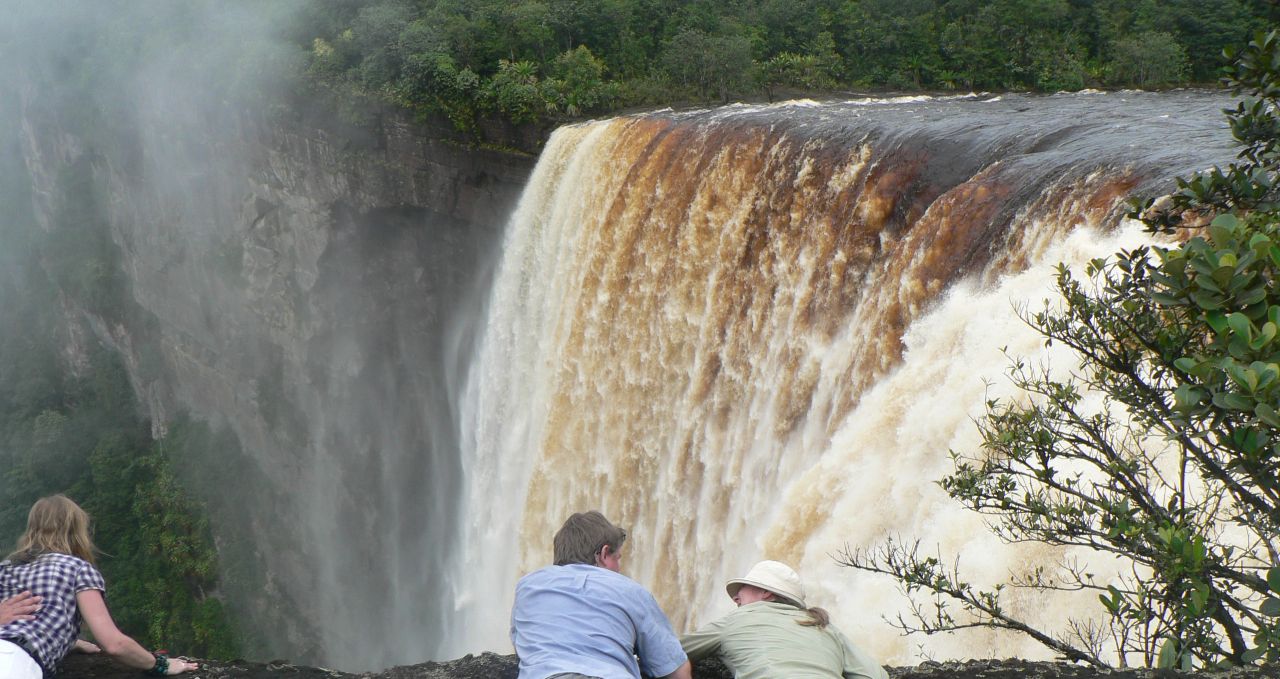
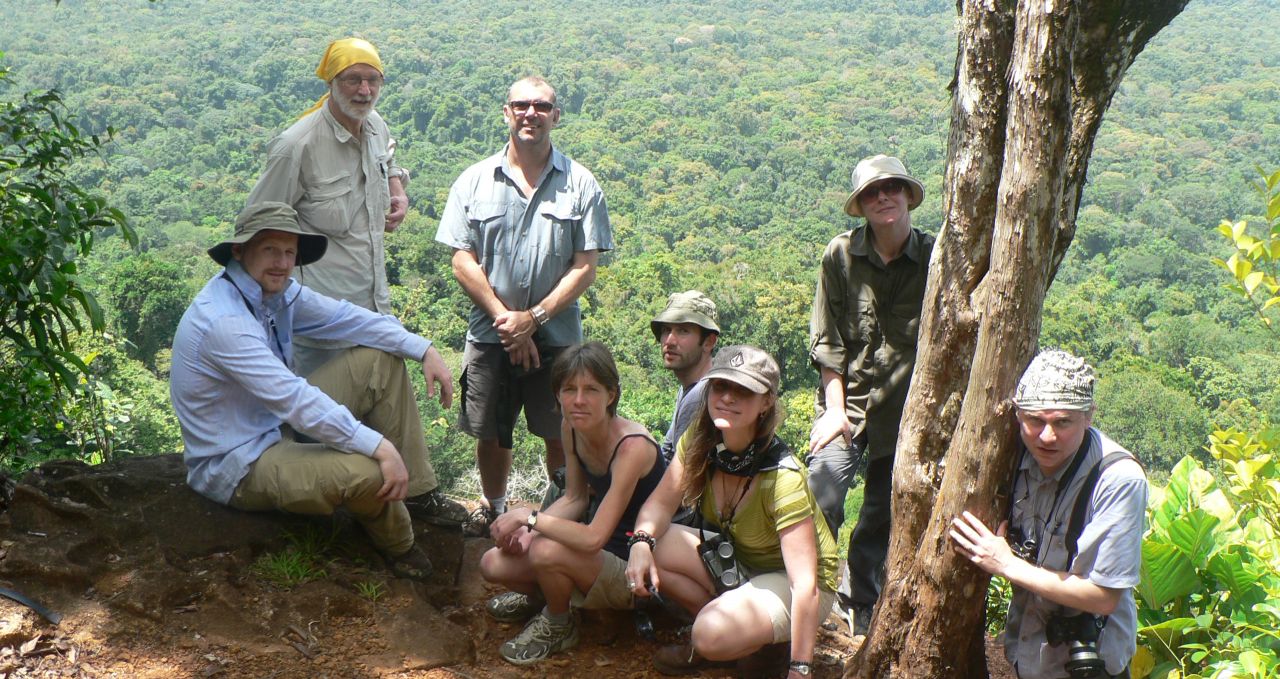
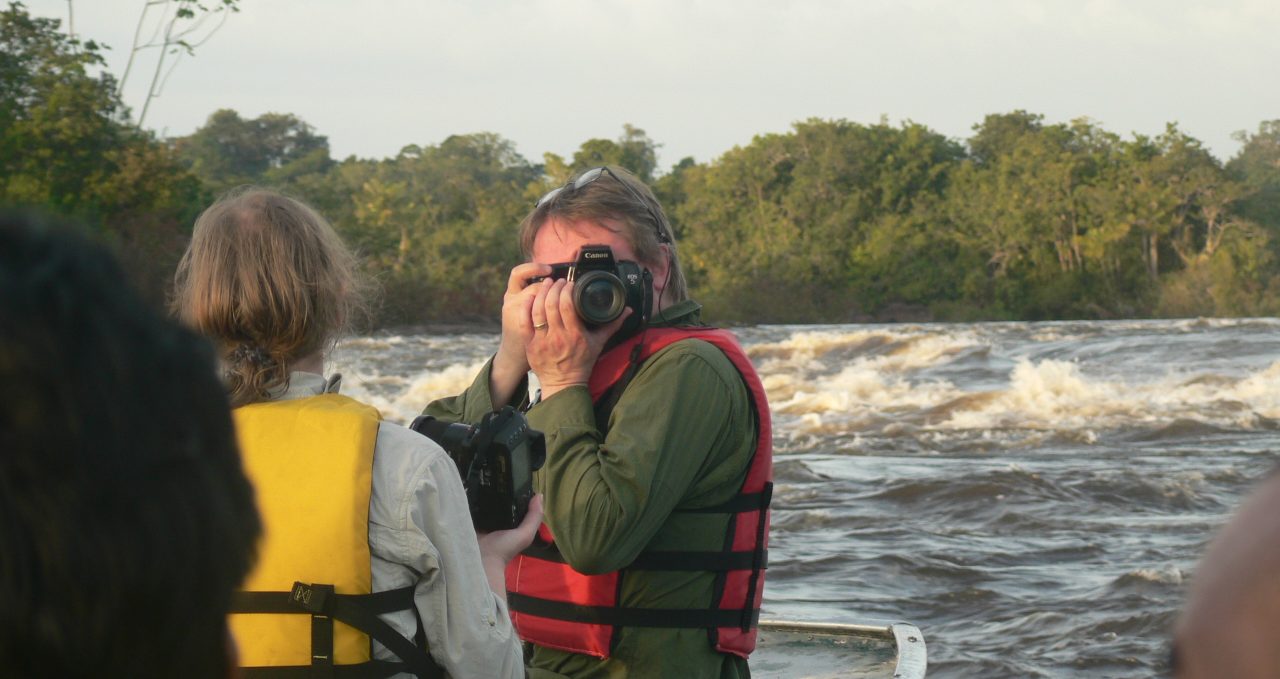
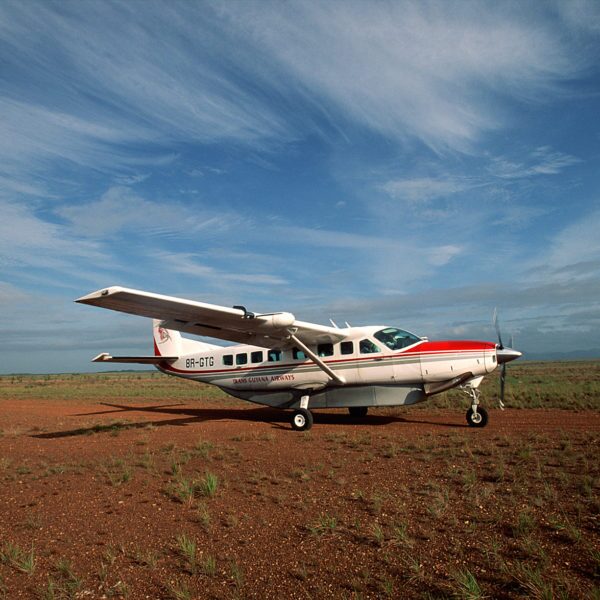
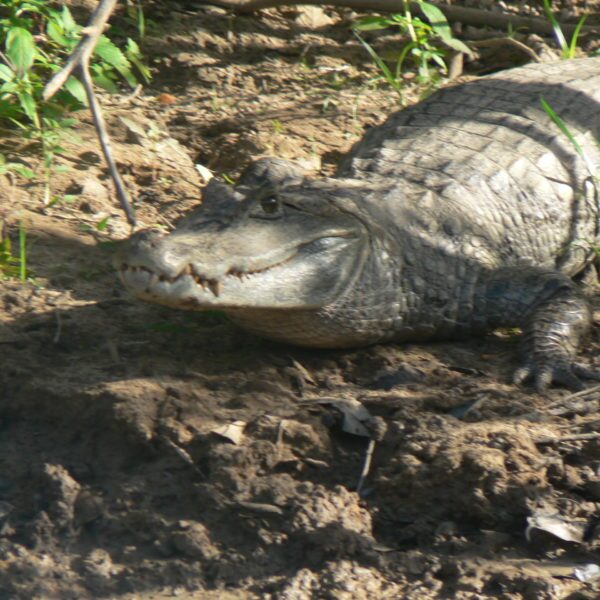
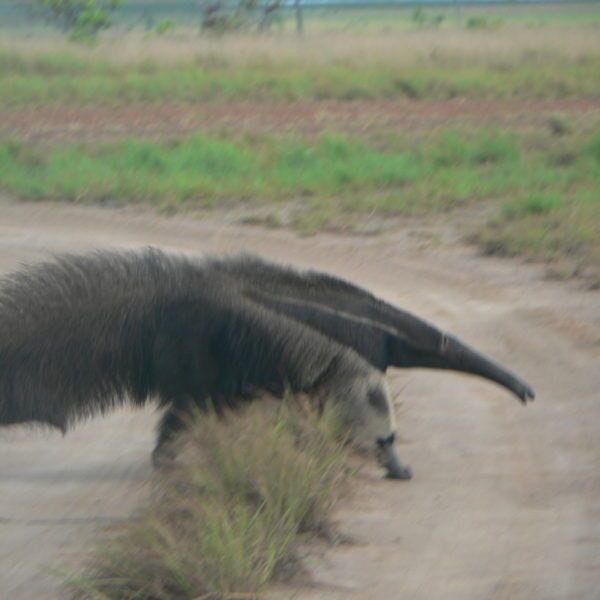
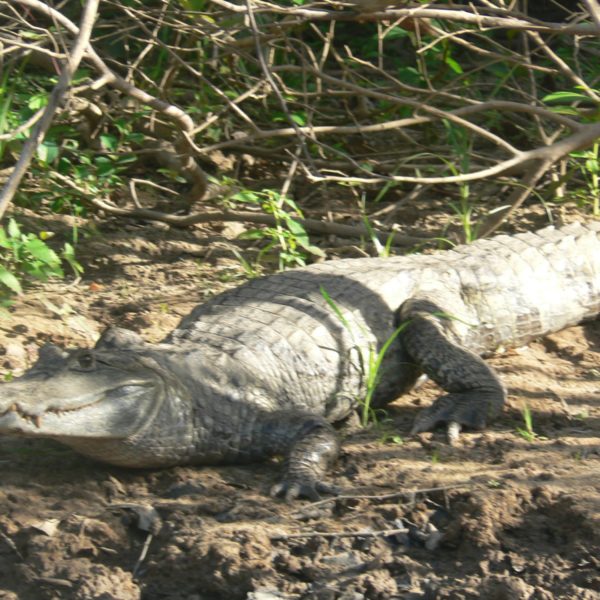
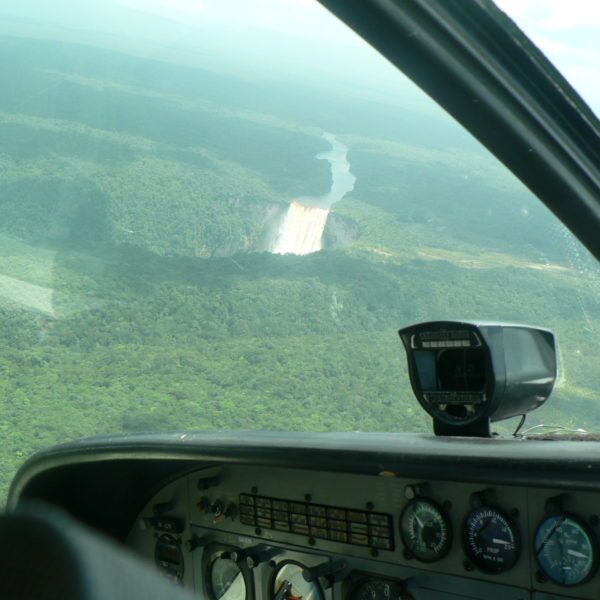
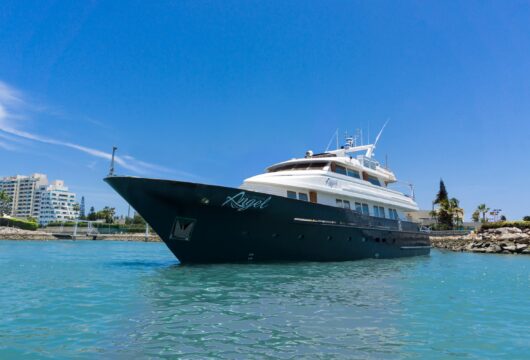
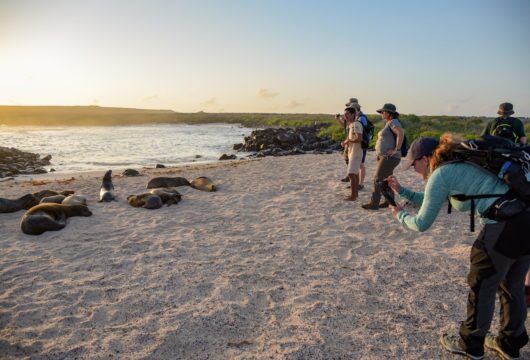
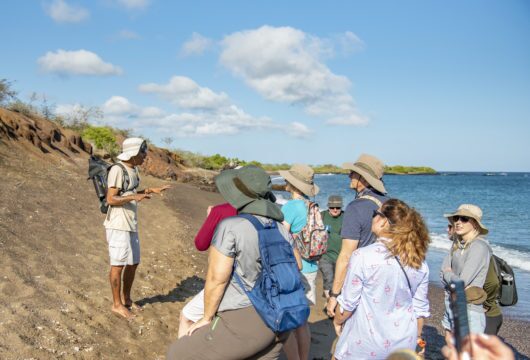
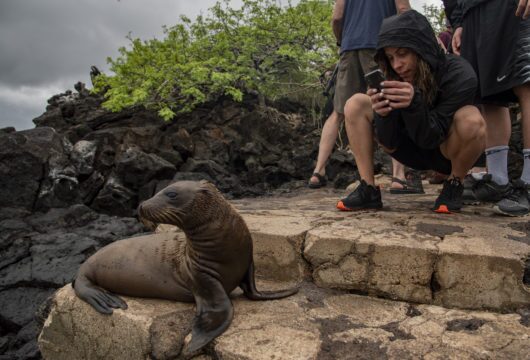
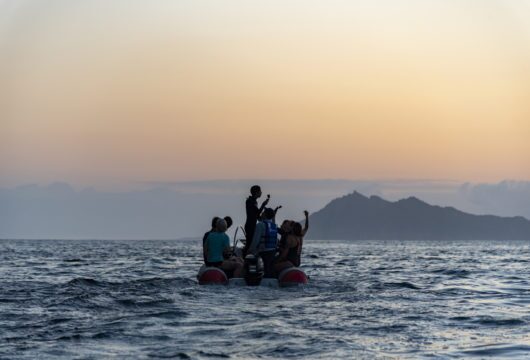
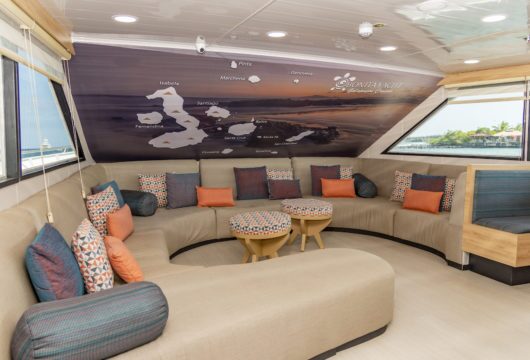
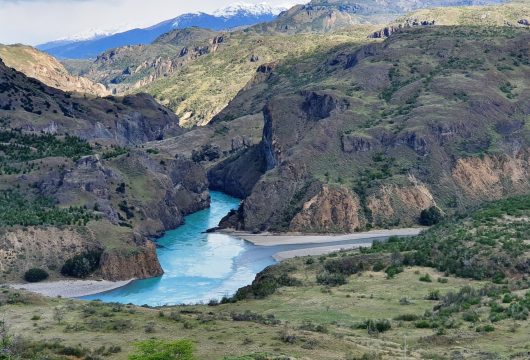
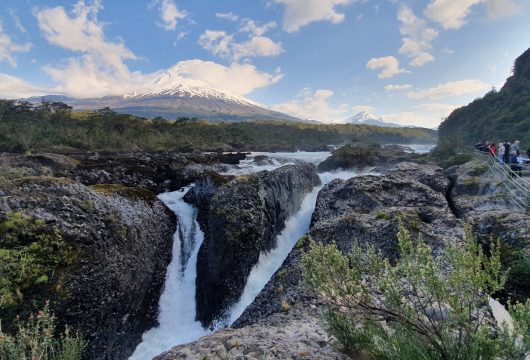
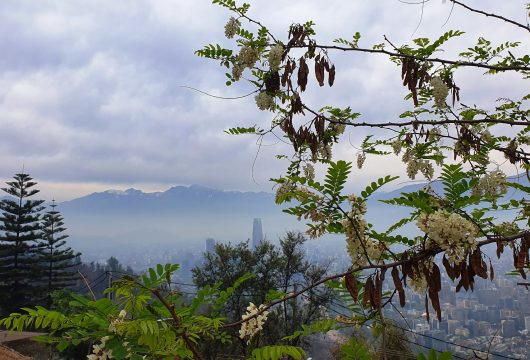
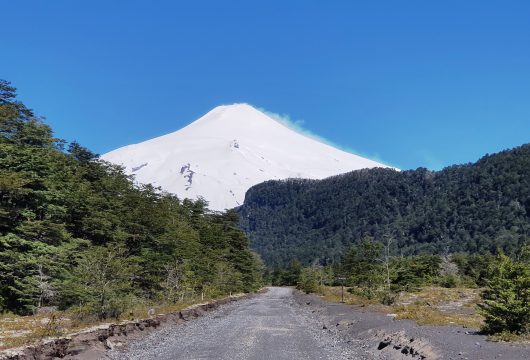
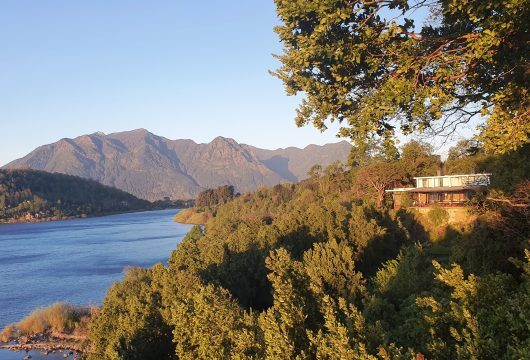
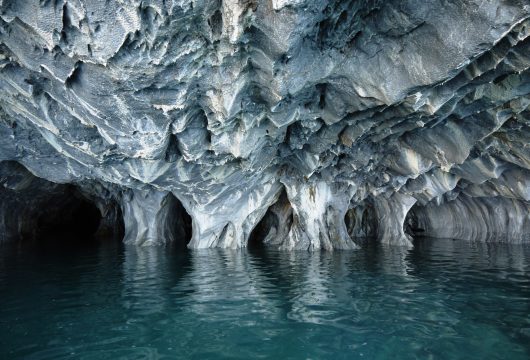
 a Tailor Made Tour
a Tailor Made Tour 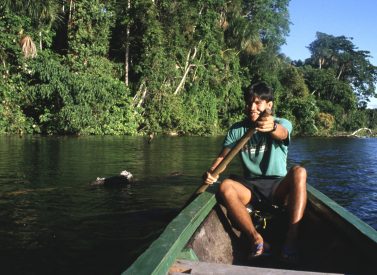
 a Group Tour
a Group Tour 